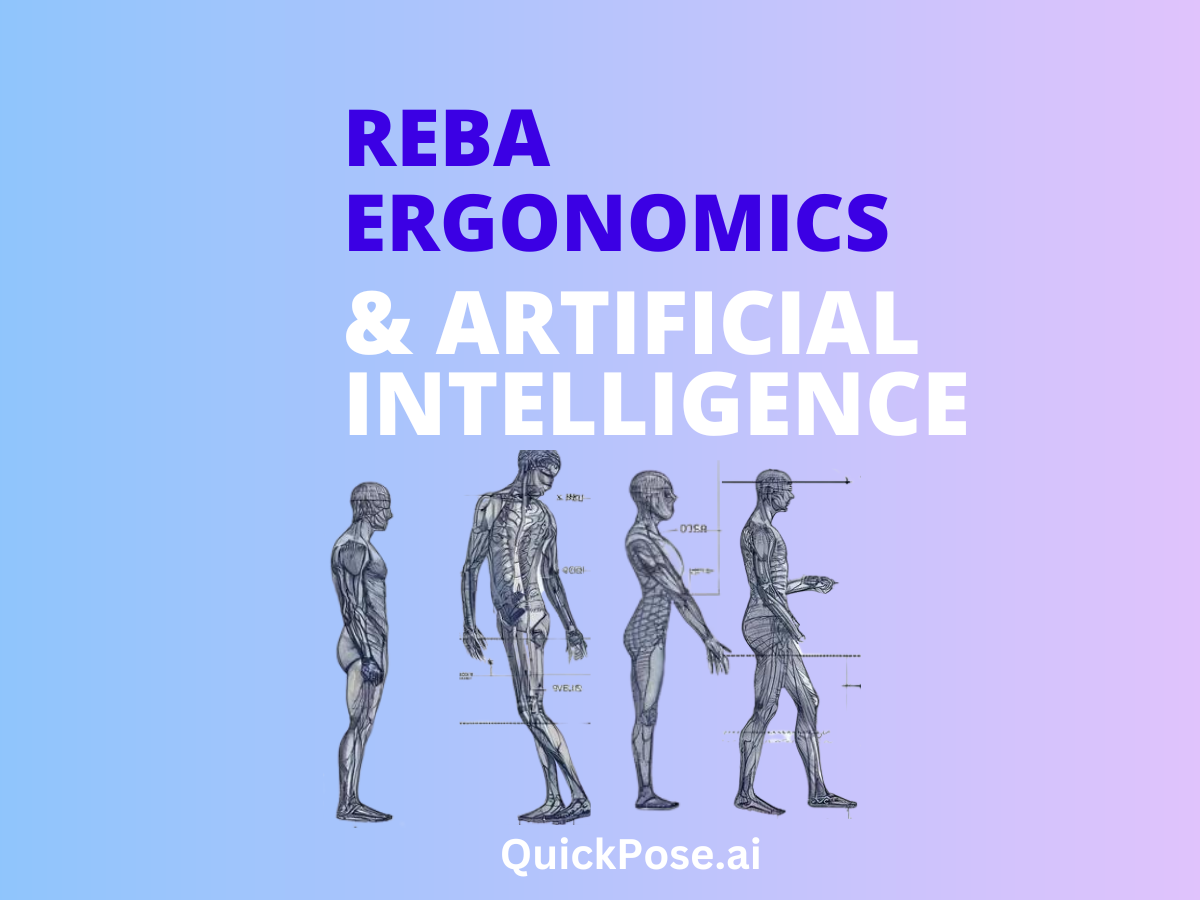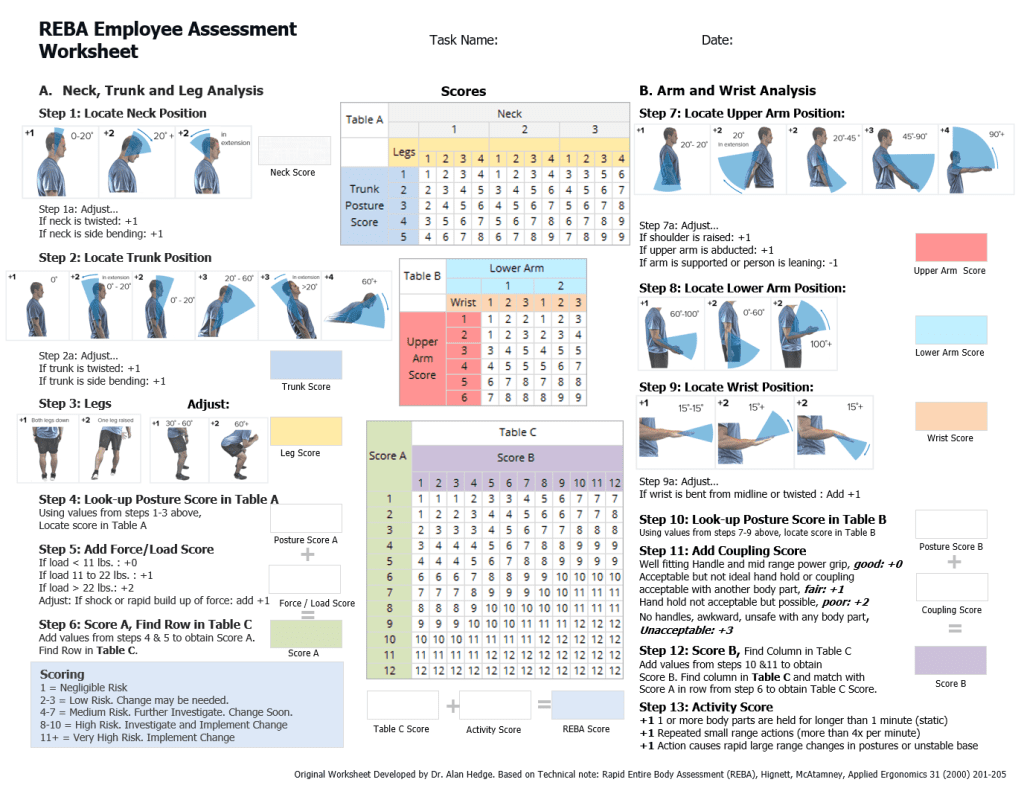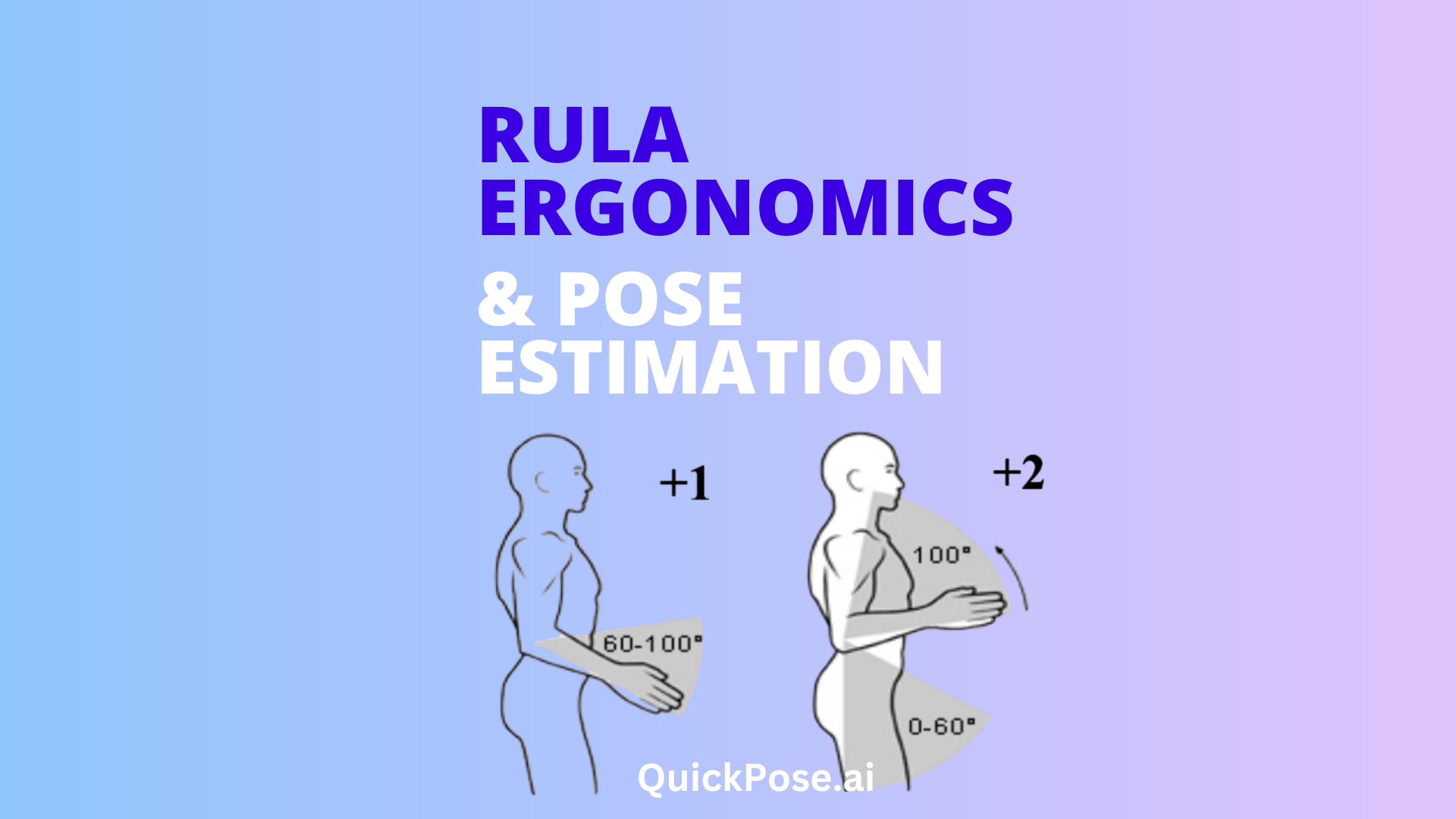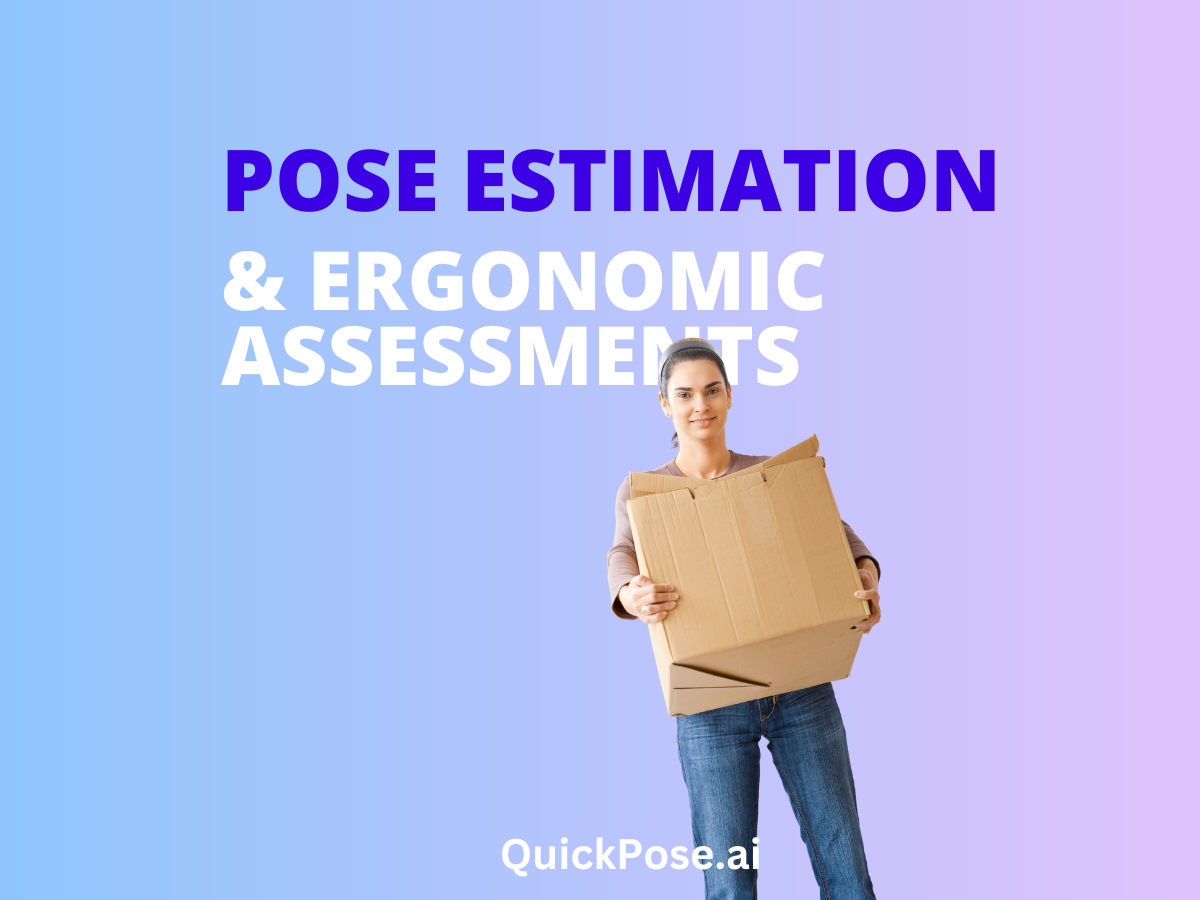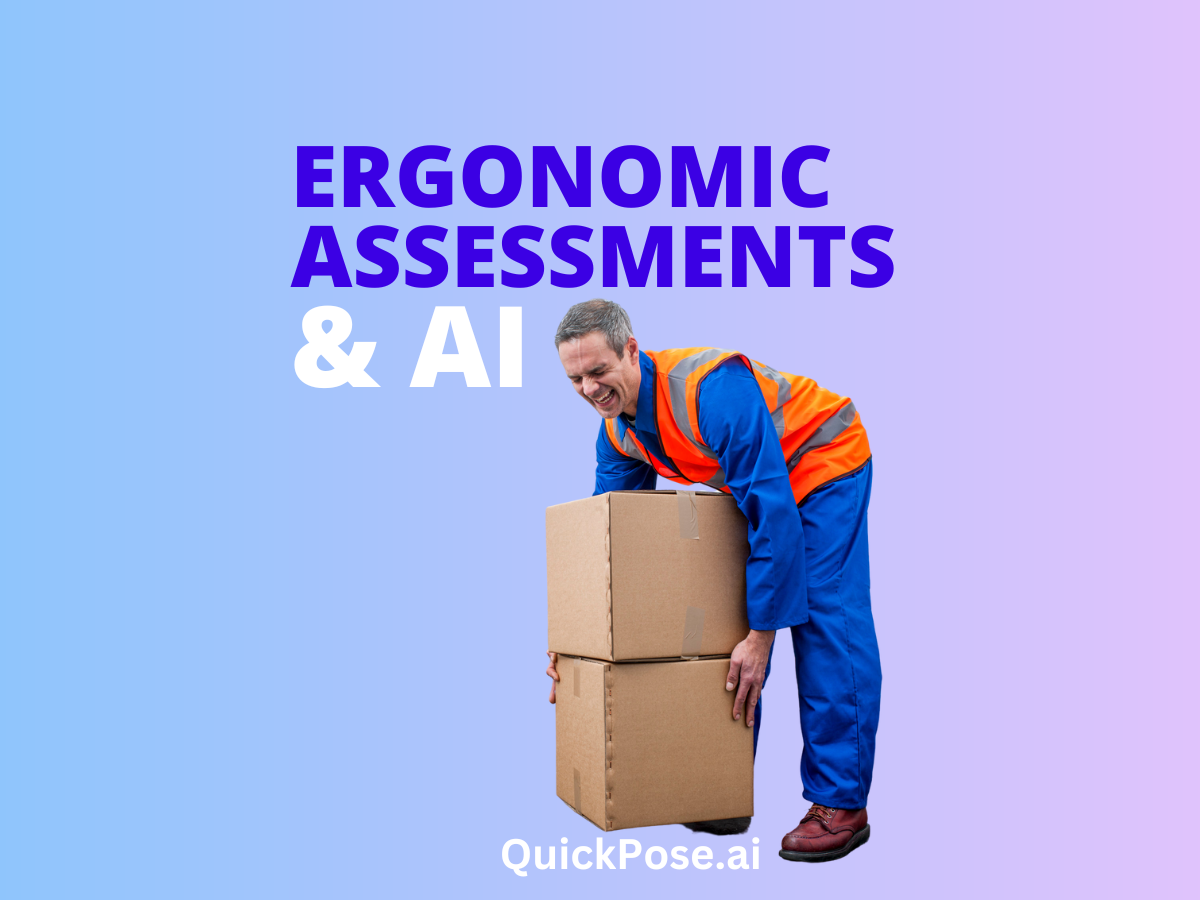At QuickPose, we are pose estimation experts and we build custom AI Pose Estimation projects. In the field of ergonomics and workplace safety, the REBA Assessment is a tool our clients use on a daily basis that we can automate.
What is Rapid Entire Body Assessment (REBA)?
Rapid Entire Body Assessment (REBA) is a widely used ergonomic tool designed to evaluate the risk of musculoskeletal disorders associated with various job tasks. It assesses the posture, force, type of movement, and repetition involved in work activities to identify potential risks to workers’ health.
Key Components of REBA
- Posture Assessment: Evaluates the positions of the neck, trunk, and limbs.
- Force/Load: Considers the load or force exerted during tasks.
- Activity Level: Analyses the frequency and duration of tasks.
- Coupling: Examines the quality of grip or hold.
Get Access to Our TestFlight Demo
Check out QuickPose iOS SDK abilities in our TestFlight Demo app.
How REBA Assessments are Conducted
Traditionally, REBA assessments are conducted manually by ergonomists or health and safety managers. The process involves observing workers’ postures and movements, recording data, and scoring each body region based on predefined criteria. The scores are then aggregated to determine the overall risk level.
Steps in Manual REBA Assessment
- Observation: The assessor observes the worker performing their task.
- Recording Postures: Key postures of the neck, trunk, legs, and arms are recorded.
- Scoring: Each posture is scored based on its deviation from a neutral position.
- Calculating Risk: Scores are combined to provide an overall risk level.
Drawbacks of Manual REBA Assessments
While effective, manual REBA assessments have several limitations:
- Time-Consuming: The process can be lengthy, especially in dynamic work environments.
- Subjectivity: Assessments can vary between evaluators due to subjective judgments.
- Inconsistencies: Different observers might interpret the same posture differently, leading to inconsistent results.
- Limited Scope: Manual assessments are typically conducted periodically, missing continuous monitoring and real-time risk identification.
AI-Powered REBA Assessment Using Pose Estimation
At QuickPose, we specialise in pose estimation software development, and we are pioneering AI-driven solutions for ergonomics. Our AI-powered REBA assessment leverages advanced pose estimation technology to automate and enhance traditional ergonomic evaluations.
Need help building an AI project?
At QuickPose, our mission is to build smart Pose Estimation Solutions that elevate your product. Schedule a free consultation with us to discuss your project.
How Pose Estimation Works
Pose estimation uses computer vision and machine learning algorithms to detect and track human body points in real-time. By analysing video or live feed, the software can accurately map body joints and postures.
Advantages of AI-Powered REBA
- Real-Time Monitoring: Continuous assessment of workers’ postures without interruption.
- Accuracy and Consistency: Eliminates subjective biases, providing consistent evaluations.
- Scalability: Capable of monitoring multiple workers simultaneously across various locations.
- Data-Driven Insights: Provides comprehensive data for better ergonomic planning and intervention.
Implementing AI-Driven Ergonomics Solutions
Health and safety managers across different industries can benefit from integrating AI-powered REBA assessments. By adopting this technology, companies can proactively address ergonomic risks, enhance workplace safety, and improve overall productivity.
Steps to Integration
- Assessment of Needs: Evaluate the specific ergonomic challenges within your organisation.
- Installation of Pose Estimation Systems: Deploy cameras and sensors in key work areas.
- Training and Calibration: Ensure the system is accurately calibrated for your specific tasks and environments.
- Continuous Monitoring and Feedback: Use the AI system to provide real-time feedback and recommendations.
Conclusion
AI-powered REBA assessments represent the future of workplace ergonomics, offering precise, consistent, and real-time evaluations. QuickPose is at the forefront of this technological revolution, providing innovative solutions to enhance worker safety and well-being.
By leveraging QuickPose’s advanced pose estimation technology, health and safety managers can revolutionise how ergonomic assessments are conducted, leading to safer and more productive workplaces.
